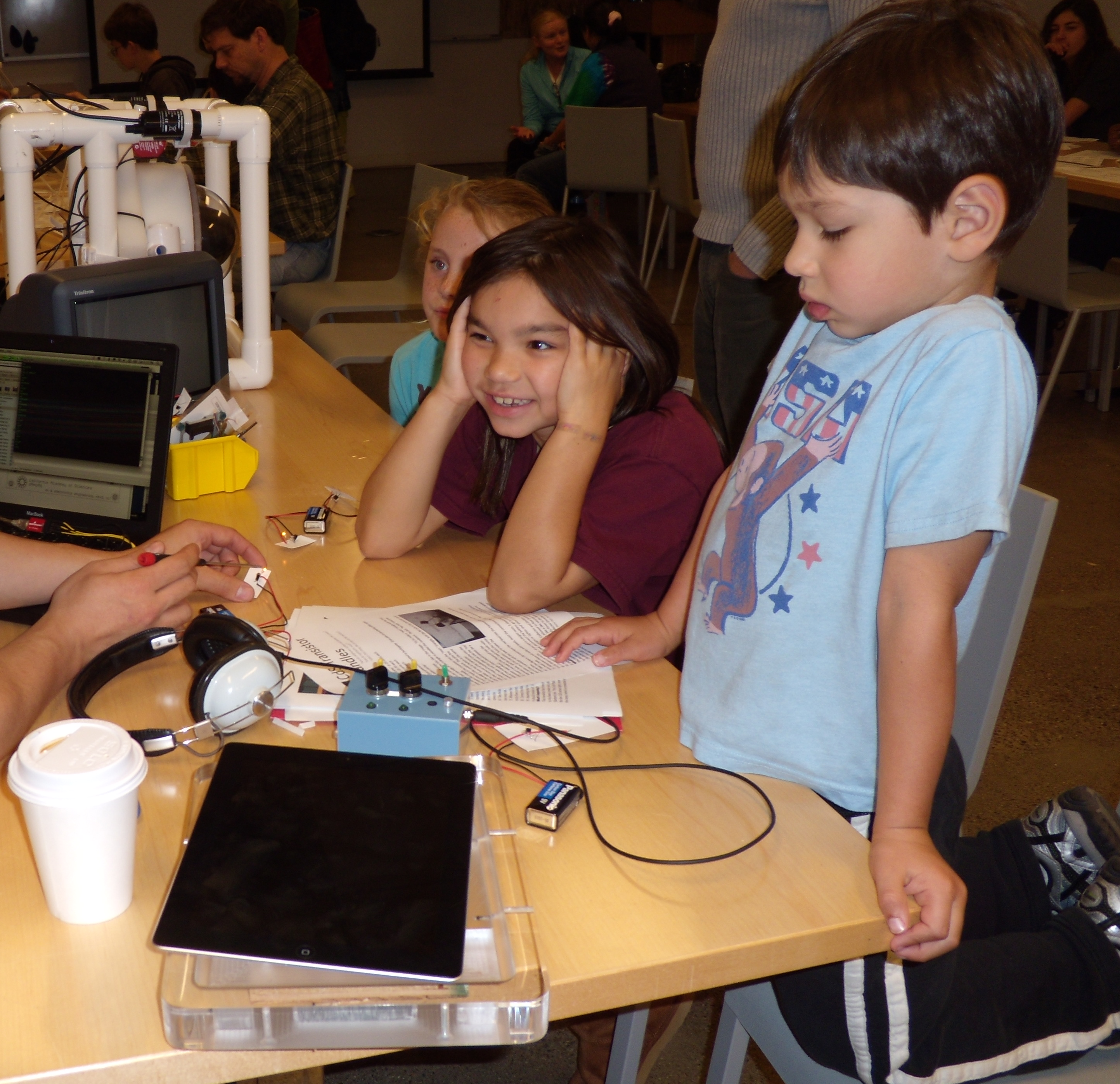
It's never to early to start STEM!
In lieu of a proper 7 days, National Engineering week was condensed into one saturday at the California Academy of Sciences. Children and adults were exposed to the fundamentals of structure, load balancing, buoyancy, aerodynamics, and electronics-- all via hands on stations peopled by interns. Except for my table :)
A couple robots, some fancy hacks and transmitted video were used to get interests going. Then a step-by-step explanation on the "how" of a transistor & the concept of a positive feedback loop (detailed in the cds transistor candle post). Most groups would spend a solid amount of time at the table, either encouraged by the robots, or by genuine interest in the transistor explanation.
Of the many questions that were asked of me, at least two could have had better repsponses:
Q: What's a good book to learn C?
A: The internet, but if you really need a book o'reilly is a good start. What's most important is the discipline of learning a programming language, and, how you apply it. You can code C strictly for computing i.e. a program which converts celsius to fahrenheit, or go a little further and program a microcontroller device which takes actual temperature readings. Obviously the "device" option takes more effort, but its more hands on. And learning how to manipulate data across applications, from input (temp reading), to computation (too hot?), to output (close blinds & send email) is important. Also fun!
Q: How did you learn how to solder?
A: By failing at it constantly. But the best advice I can give is that your soldering can only be as good as your soldering iron. Learning with a cheapo pen iron is masochistic, as those units poorly regulate temperature, and tend to have lazy tips. A solid $50 iron makes everything a lot easier (but always remember to frequently tin the tip and keep it cool when not in use!) If your tip is hot but solder won't stick to it, get another tip!


Leave a comment